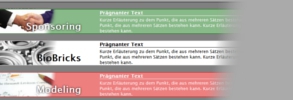Team:TU Munich/Project
From 2010.igem.org
|
||||||||||||||||
|
|
VisionAlthough classical molecular biology and genetic engineering equipped the science community with many functional proteins and possible applications, usage and linking different parts together to a working network still requires highly complicated strategies. Often the assembly of different biological parts tends to be error-prone and very difficult to extend since only few switches are established and studied in a way that they deliver reliable basic units. Even those like the ultimate protein expression control unit, the lac operon, are limited: With the lac operon only 0 and 1 can be achieved and only once per expression construct and cell. Our approach is to change that and to enable new and more exact ways to control E. coli cells using RNA-RNA-interaction based switches (bioLOGICS).
ConceptThe basic principle of our switches are short RNA sequences, the scientific idea shares similiarities with the principle of antitermination but also inherits a completely new way of RNA based transcription regulation. We used three-dimensional structure predictions and thermodynamicaly calculation to develop a set of switches (about 50 bases) and signals (about 20 bases). The switch forms a stem loop which can be resolved upon binding of a signal. On/Off switching is therefore possible delivering an easy and flexible way to control gene transcription.
Upscaling: Building networksWith those short RNA sequences as the basic unit, a network can be easily constructed. And and or-circuits can be constructed based on this on/off signal. Since the number of theoretical switch/signal pairs is nearly endless with the basic unit being of a very small size, upscaling is no problem: RNA signal can be produced in response to an RNA signal binding to an RNA switch. This may be one of the major differences to ribozyme and especially protein based networks. While the complexicity of protein-protein interactions may work for cells, constructing networks without just copying complete operons is hardly possible. With the small size of our units 10 switch/signal pairs occupy the space of an average protein on a plasmid. Circuits based on bioLOGICS may play a key role for gene regulation with more variations than just on/off.
Work ProgressEvery network starts with a basic unit. While our declared aim is to enable networks allowing fine-tuning of gene expression beyond the regular on/off the first tests starts with exploring such an on/off switch/signal pair. We tested its efficiency, robustness and reproducibility in vivo, in vitro and in silico. Furthermore we developed a software which allows easy constructions of networks delivering a ready network.
Abstract
By developing a computational biological network based on RNA logical devices we will offer everyone the opportunity to 'program' their own cells with individual AND/OR/NOT connections between BioBricks of their choice. Thereby, BioBricks can finally fulfill their original assignment as biological parts that can be connected in many different ways. We will achieve this by engineering simple and easy-to-handle switches based on predictable RNA/RNA-interactions regulating transcriptional termination. These switches represent a complete set of logical functions and are capable of forming arbitrarily complex networks.
This is a template page. READ THESE INSTRUCTIONS.
You are provided with this team page template with which to start the iGEM season. You may choose to personalize it to fit your team but keep the same "look." Or you may choose to take your team wiki to a different level and design your own wiki. You can find some examples HERE.
You MUST have a team description page, a project abstract, a complete project description, a lab notebook, and a safety page. PLEASE keep all of your pages within your teams namespace.
|
|||||||||||||||
 "
"












